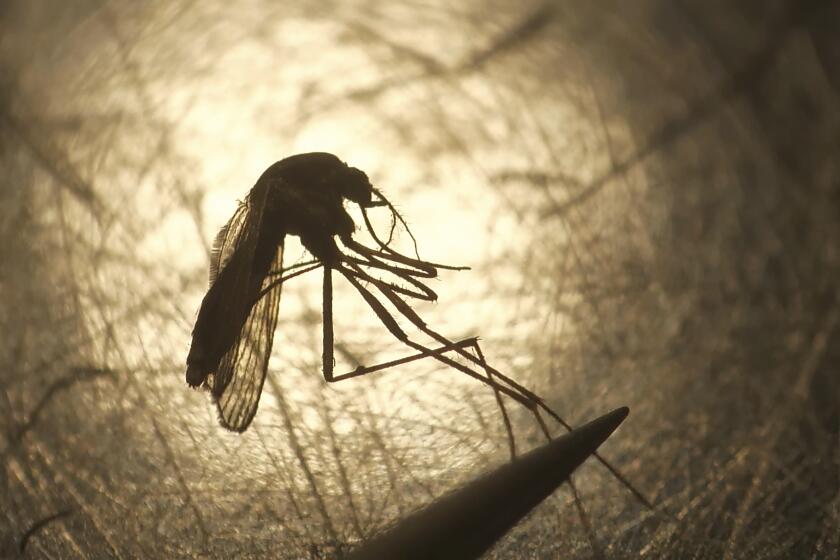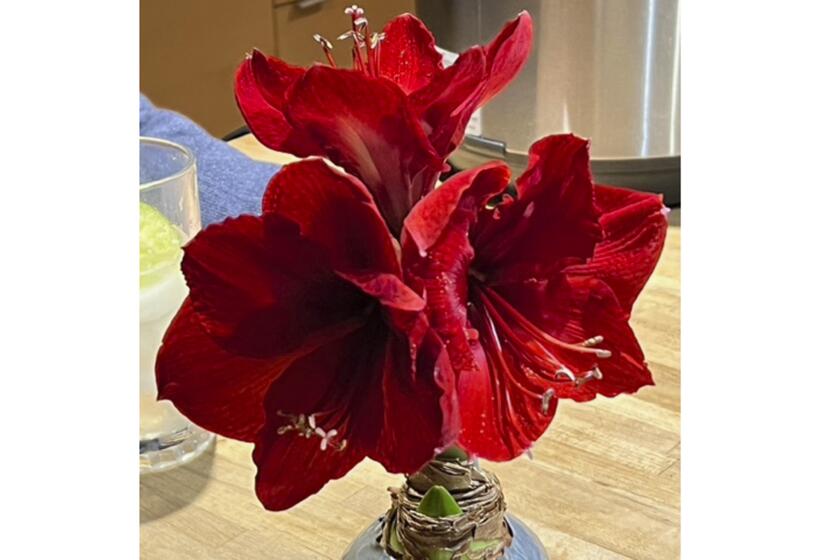Gardening: Avocados can be the pits
A fussy tree that hasn’t produced fruit in a decade likely has a problem, and there’s no better time to panic than the present.
Let’s look at just 82 of the 190 possible causes of avocado tree disappointment.
I bought a “Charlie Brown” tree that already had an avocado on it. Weeks later, it fell off. Tears flowed. I tried to do all the right things, after I tried everything else. Prognosis: guarded.
As a rule of thumb, avocado trees should produce something within your lifetime. Commercially-sold trees are grafted from mature avocado varieties and should begin to produce a crop after three or four years. Non-grafted seedlings can take seven to 10 years to produce.
If you grow one from an avocado pit, it might not bear fruit for 10 or 15 years. Maybe you’ll see results in your afterlife, but I’m not sure how that works.
Avocado trees need nutrients and organic matter to fend off diseases and to bear fruit. Apply a nitrogen fertilizer in late winter and again in early summer. Too much nitrogen, however, causes lots of foliage, but very little fruit. In early spring phosphorus and potash will encourage blooming and fruiting.
Leave the leaves on the ground; they’re nature’s way of providing food. Remove grass and ground cover around the tree; they compete for nutrients.
You might not get any fruit if you have a pest or disease problem. Spray the usual suspects with Liquid Copper Fungicide in June, and again in September. Spray when temperatures are below 90 degrees Fahrenheit. Spread slug and snail bait around the tree.
According to UC Davis, avocados are “sensitive to salts, accumulating chlorides and sodium more readily than most other tree crops.” Leaf tip burn followed by defoliation means either inadequate irrigation or too much fertilizer. Root rot fungus is the most serious disease and is caused by excess soil moisture or poor drainage.
Clusters of small green flowers should appear from January through March.
However, blooms don’t mean that your tree will fulfill its duties. Avocado blossoms contain both stamens and stigmas, but they aren’t self-pollinating.
Pollination occurs when bees, birds, butterflies or wind transfer pollen from a blossom on one tree to the female blossom on another tree.
According to UC Riverside, one day the stigmas (females) might be ready, but the pollen isn’t. The following day, the males are ready for business with plenty of pollen, but stigmas are not able to receive it.
Timing is everything. They must work fast.
Haas avocados are female one morning and male the following afternoon. Fuertes are female one afternoon and male the following morning. To ensure proper pollination of your tree, make sure you have at least one tree of the opposite type. The sex life of an avocado gives me a headache.
For your DIYers, grab a Q-Tip and pollinate the trees yourself. Simply determine if it’s morning or afternoon, and figure out who’s in the male stage and who’s in the female stage. Good luck with that. Hand pollination can make your tree set much more fruit than if the insects did the job.
Long cold spells, frosts and strong winds can damage flower buds, cause foliage to drop and reduce your chances of fruit. Sustained temperatures above 100 degrees Fahrenheit or below 70 degrees Fahrenheit can cause little or no fruit. Temperatures below 60 degrees Fahrenheit may cause pollinating bees to stay in their hives. Bunch of wimps.
Heavy rains can also discourage bees because they would rather flit from blossom-to-blossom on the same tree instead of flying between two different trees. Lazy bums.
Avocado trees need a mate located within 50 feet. Longer distance relationships don’t work.
The trees need yearly pruning to provide more sunlight, air circulation and to rejuvenate them. Too much pruning, however, requires the tree’s energy to repair itself — energy that otherwise would have been used to produce fruit.
These trees grow best in sandy loam, and need a sunny spot. Though a tree will survive in shade, it might not produce fruit.
Water as needed, but deeply. Filling the well around your tree will produce roots that grow near the top of the ground. Exposed roots can be subject to burns, diseases and be easy access to pests. You want those roots to expand downward and reach out for that water.
Because of biennial fruiting, avocados will often produce a heavy fruit set one year and a much lighter crop the following year.
If your avocado tree is a lemon, it might be a poor rootstock. Dwarf stocks seem to produce the best fruit and will bear more quickly than full-sized trees.
Still no guacamole? Don’t panic. Keep trying. Setbacks are a main ingredient in success.
Schmidt is a Poway resident with over 40 years of gardening experience.
Get the Pomerado News in your inbox weekly
Top headlines from Poway, Rancho Bernardo and 4S Ranch, every Thursday for free.
You may occasionally receive promotional content from the Pomerado News.





